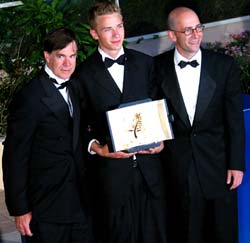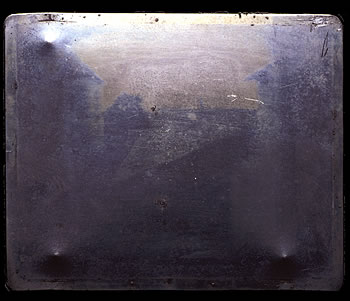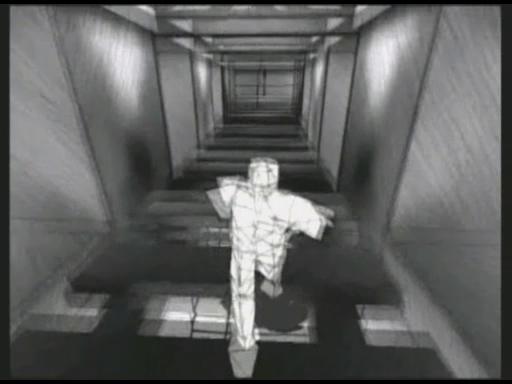 [via Kultureflash] John Cage Uncaged is a weekend of performances, films and discussions (“and mushrooms!”) at Barbican Hall.
[via Kultureflash] John Cage Uncaged is a weekend of performances, films and discussions (“and mushrooms!”) at Barbican Hall.
Cage symphony performances are rare enough to make them not-to-be-missed events. Highlights: Friday’s BBC Orchestra concert, “Cage in his American Context,” (which will include the first UK radio performance of Cage’s most famous work, 4’33”) and Saturday’s Musiccircus, a happening-within-a-happening which gets an annoyingly giddy description “Bassoons in the bars, flutes in the foyers and, who knows, you might even find a tuba in the toilet!”
You can buy tickets or a weekend pass, but for my money, I’m sticking to the radio. Here’s BBC3’s program schedule for Friday (that’s GMT, don’cha know):
19:25 John Cage Uncaged: Cage In His American context, Part One
20:20 Cage on Cage, interviews from the BBC Archives
20:40 John Cage Uncaged: Cage In His American context, Part Two
21:30 A discussion of Yasujiro Ozu’s Tokyo Story
22:00 John Cage Piano (including works by Feldman, Wolff, Schoenberg)
12/16 update: The Guardian collects Cage-related recollections and discussions by composers and artists, including Martin Creed’s very Cage-y “I want what I want to say to go without saying.”
Category: inspiration
On “In What Language,” a Different Kind of Airport Music
I’m listening to the composer Vijay Iyer and poet/rapper Mike Ladd discuss their collaborative song cycle, “In What Language,” on WNYC’s Soundcheck. It explores the inner lives and thoughts of people in international airports, and it rocks.
Iyer and Ladd composed the multi-layered, improvisational music/vocal suite in response to the experience of an Iranian filmmaker who was detained, harassed and deported at JFK a couple of years ago.
The first scene of my first short, Souvenir (November 2001), is in Charles deGaulle, where the new security rules spur the story into action (such as there is). Clearly, I’m pre-wired to like “In What Language,” which was first performed in May at the Asia Society, and is out on CD, the launch of which is being celebrated at Joe’s Pub Jan. 20.
warning: 350pp of the new Cervantes novel
has me talking/writing like a knight. I.e., half Quixote, half medieval times. oh, and all posts will be 900 pages long.
Gus Van Sant’s Go-to Guy

Gus Van Sant, Elias McConnell, and Dany Wolf
at Cannes 2003, image: festival-cannes.com
There he is, scorched in Death Valley and on the Saltflats of Utah; in a mold-closed school with a barebones crew on scooters; and on the Palais steps of Cannes, where he accepted the Palme D’Or this year for Elephant.
Gus Van Sant? Sure, he’s there, too, but I’m talking about Dany Wolf, the producer. The guy who actually has to figure out how to make the movies Gus sees in his head.
While I’ve been a fan of Van Sant’s since Drugstore Cowboy, I’ve been very interested in his recent bold filmmaking experiments, which coincide with my own entry into the field. I wanted to find out Wolf’s on-set experience and insight on making the films that are remaking film.
Below, read my November 2003 discussion with Wolf, an exclusive feature of greg.org.
[Note: No underage Filipino data entry workers were harmed in the transcription of this 3,000-word piece. Special thanks to Dany Wolf, Jay Hernandez and Jeff Hill, who aren’t doing so bad, either.]
Agnes Varda Speaks (and shows film, of course)
[via GreenCine] Doug Cumming’s got an account of Agnes Varda discussing a screening of her latest short film in Seattle. Also, an earlier bonus Varda discussion at Filmjourney.
My Google Ad, which used to read, “Damn you, Agnes Varda/The Gleaners made me make a film/it’s showing at MoMA next month,” wouldn’t be allowed under Google’s prissier, clean up for the IPO-style terms of service. feh.
Today, though, Doug’s tells of an Errol Morris performance at a Fog of War screening. I disagree with Doug’s negative read on the conclusions Morris draws (or doesn’t, depending), but he’s worth reading. I found the movie extremely revealing of McNamara’s steel-willed self-delusion/preservation, and I think that self-righteous aggression rules the day in Rumsfeld’s Pentagon. Long story short: If you’re planning on feeling thankful for not having to relive the Vietnam war fiasco, I suggest you get a backup plan.
Ennio Morricone, The Movie Music Man
In a Guardian interview, Ennio Morricone talks about composing music for films. My favorite of his theories: “The music in a film must enter politely, very slowly,” like an uninvited guest at a party. [Guess they raise a more genteel breed of gatecrashers in Italy.]
I’m the first to cop to being influenced by Morricone. While still on location for Souvenir (November 2001), I considered using some of his music for our soundtrack. Once the post-production party got underway, though, it was obvious that the beautiful, loaded track didn’t fit in at our gritty little party.
With a new 4-CD set, Io, Ennio Morricone, the composer’s not only looking to come in, he’s planning to stay for a while.
Whereas, Ten Hours of Polish Film is NOT an Ordeal…
I came to Kieslowski for the fateful mystery of La Double Vie de Veronique, but I stayed for the unassuming, naturalistic power of the Dekalog.
This seminal ten-part series of films is playing this weekend at Symphony Space in NYC. POV has an excellent write-up, with good links to get you in the mood.
The Decalogue was one of the greatest unwatchable works of film, ever. For years in North America, the series, which Kieslowski and writer Krzysztof Piesiewicz originally made for Polish TV, was kept off of video and DVD by weird rights disputes. But it’d turn up at film festivals and cinematheques, and you’d suddenly have to figure out how to shoehorn ten hours of moviegoing into two or three days. It was an experience prewired to disappoint, or, more precisely, leave you wanting.
By 2000, I’d only managed to see half of the installments, when an odd one-year distribution agreement brought a bare-bones 2-DVD set to the market. I snapped it up, and since then I’ve been steeping regularly in some of the most engrossing storytelling around.
This year, The Decalogue reappeared in a far superior 3-disc format, complete with several Kieslowski interviews and other real supplementary material. So get up to Symphony Space for at least a couple of episodes, then watch and rewatch them at home. Of course, GreenCine rents them one disc at a time; it may be better, emotionally, to pace yourself.
[related: the effects of watching Dekalog on an impressionable new filmmaker]
“Kieslowski Season!” “Tarantino Season!” “Kieslowski Season!”
To explain how I came up with my Souvenir series of ultimately inter-related short films, I went into an extended discussion of Krzysztof Kieslowski’s Dekalog with someone recently. Now it turns out Riverside Studios in London is screening the entire Dekalog starting Sunday as part of its Krzysztof Kieslowski Season.
It’s not like it used to be, when you could only see Dekalog in festival screenings. Now there’s a 3-disc DVD version available, marginally better than the 2-disc set released briefly in 1999. There’s also a boxed set of Three Coleurs out now. Still, Kieslowski’s films can be visually mesmerizing; see them on the big screen when you can. [Unfortunately, I’m getting to London on the 15th, three days after the Season ends.]
At the opening of his discussion of Kieslowski‘s work, the Guardian‘s Derek Malcolm reminds us that Pulp Fiction closely beat out Three Colours: Red for the 1994 Golden Palm at Cannes. What kind of world would we live in if Kieslowski, not Tarantino, had won? Hint: Tarantino describes his latest films, Kill Bill, as a “duck press of all the grindhouse cinema” he’s ever seen. If it’s all the same, I’m going with wabbit.
When four Soderbergh links in a week are not enough:

Get the greg.org e-commerce fire hose ready*. I’m wrapping up Soderbergh’s book, Getting Away With It, and I’ve rather liked it. Makes me want to see Schizopolis, one of the movies he angsts over in his journal entries. Trouble is, it’s only been available on VHS, until now. According to Amazon, Criterion will release Schizopolis on Region 1 DVD October 14.
* Just an update on the pressure the greg.org e-commerce fire hose exerts: Amazon showed three copies of Soderbergh’s book when I called “dogpile!” Now they show four. My endorsement appears to have caused someone to return the book. Now let’s see if we can strangle this DVD in its crib.
KST:3K, KiaroStami Theatre: 3K
The Guardian‘s Lee Roberts reports on Iranian film godfather Abbas Kiarostami’s debut stage production of the Ta’ziyeh, a compilation of classic tales of the death of Mohammed’s grandson, Hussein. The plays are a traditional part of fervent religious festivals in Iran, but are often considered vaudeville in the West.
Kiarostami lets a troupe of Ta’ziyeh players do their thing on stage, while synchronized images of Iranian audiences’ reactions to the same play are projected behind them. The result: the Roman audience sees both the play and the Islamic audience’s more unabashed reactions to it.
That Elephant in the room just won the Palme d’Or

Swearing may be better in French, but teen shooting? That’s best en anglais, mon ami. Gus Van Sant just won the Palme d’Or and Best Director awards at Cannes for his latest film, Elephant, which is Columbine-esque, but actually based on the late Alan Clarke‘s last film, a 1989 short about killings in Northern Ireland.
Check out a review from Elvis Mitchell, wild, anti-american reports from those lushes at the Guardian, and an interesting theory of Cannes’ gunloving esprit at the GreenCine weblog.
Now We’re Gettin’ Somewhere, Gerry
The compelling/amusing Super Mario Brothers: A Literary Criticism (thanks, Jason!), which puts paid to my (non-)critique of the connections between Gerry, its filmic antecedents, and SimCity-style video games.
On Why We Should All Go To Austin, Texas
 View from the window at Le Gras, 1826, Joseph Nicéphore Niépce
View from the window at Le Gras, 1826, Joseph Nicéphore Niépce
image: Ransom Center, UT Austin
Or specifically, the Ransom Center at the University of Texas, Austin:
1) to see the world’s first photograph, a view out his window taken by a Frenchman, Joseph Nicéphore Niépce, in 1826. Jim Lewis writes about it on Slate.
2) to read the unpublished manuscript of Minstral Island, a futuristic musical by Thomas Pynchon and Kirkpatrick Sale, which they recently acquired. [Fill out your research application before you go. Oh, and get Pynchon’s written permission if you want to make a copy. I’m sure he’s listed.]
Places Where It Feels Odd To Be Reading Gravity’s Rainbow
 It’s not quite like whipping out your copy of Lolita at the playground, but it sometimes feels weird to read Gravity’s Rainbow “in public.” Can’t say if it’s the book itself, which is rather unsettling and is shot through with Strangelove-ian absurdity; my used paperback copy (which I sought out for instant authenticity, as if I pulled it off that cinderblock bookcase I apparently had in apparent grad school); the conspicuous tape job (I was clearly the first person to crack the spine. Documenta packing tape ROCKS, by the way.); or general marginalization anxiety (Anthony Lane, quoting and reviewing Mason & Dixon: “‘What we were doing out in that Country was brave, scientifick beyond my understanding, and ultimately meaningless.’ He sounds like a reader of Thomas Pynchon.”).
It’s not quite like whipping out your copy of Lolita at the playground, but it sometimes feels weird to read Gravity’s Rainbow “in public.” Can’t say if it’s the book itself, which is rather unsettling and is shot through with Strangelove-ian absurdity; my used paperback copy (which I sought out for instant authenticity, as if I pulled it off that cinderblock bookcase I apparently had in apparent grad school); the conspicuous tape job (I was clearly the first person to crack the spine. Documenta packing tape ROCKS, by the way.); or general marginalization anxiety (Anthony Lane, quoting and reviewing Mason & Dixon: “‘What we were doing out in that Country was brave, scientifick beyond my understanding, and ultimately meaningless.’ He sounds like a reader of Thomas Pynchon.”).
1. In the middle of a crowded contemporary art auction at Christie’s. (Just during the lulls, the Bleckners and the Basquiats).
2. At Singin’ In The Rain, which I found to be kind of corny. Or is it just me? Wendy Wasserstein loves it and claims it’s not “cloying or campy.” In some moments, the saturated colors and weightlessness prefigure Jacques Demy’s Umbrellas of Cherbourg, which I like much more (and which turns out to be anything but weightless).
The Comden & Green “Moses Supposes” song is pretty good, though, possibly because it tries even a little to fit into the story. And I came away really admiring the long, near-stationary takes during the musical/dance numbers, the “master-master”, if you will. It’s the diametric opposite of Moulin Rouge (110+ edits/min in songs). I’d like to reference/adapt this in the Animated Musical, and I think it can work well, as more than just historical homage.
Long choreographed shots of musical scenes live on in the auteur-y crane/steadicam shots directors show off with (cf., The Shining, Touch of Evil, The Player, Goodfellas, Boogie Nights, Bonfire of the Vanities even).

Video games have turned this symbol of technological virtuosity, literally, into child’s play: first-person shooters are long, unedited takes by definition. Machinima takes advantage of the game “camera” to turn a programmable/alterable game engine into a virtual movie studio. Somewhere in between Scorcese, Anderson Lara Croft is my story, Singin’ in the Rain meets Quake III.
And I Felt A Little Paranoid Before Learning Pynchon Wrote A Musical
“Mistral Island Manuscript acquired by Univ. of Texas”
According to this report from last week, Pynchon collaborated with Kirkpatrick Sale in 1958 to create a musical set decades in the future, where IBM controls the world. Sale gave “Luddite” its contemporary meaning and “wrote extensively on the political, economic, sociological, and environmental impacts of technology.”
I’m backing quietly out of the room…
Pynchon and animation: “Except maybe for Brainy Smurf, it’s hard to imagine anybody these days wanting to be called a literary intellectual, though it doesn’t sound so bad if you broaden the labeling to, say, ‘people who read and think.'” (from “Is it OK to be a Luddite? in the NYTimes.)
And Pynchon and comic books: Charles Bock’s loong, engaging ArtKrush rumination on Tolstoy, Great Art, and growing from the X-Men to, yes, Gravity’s Rainbow.)
And some (non-Pynchonian) animation links: Toon Shader, a software tool for bringing hand-drawn cel animation and computer animation together, created by Michael Arias, a CG Guru who works with Hayao Miyazaki, called the greatest animation artist ever (people at the Mouse think so, too, you know).
A Village Voice article by Anthony Kaufman about cinematographer Ellen Kuras’ ability to make beautiful DV.
